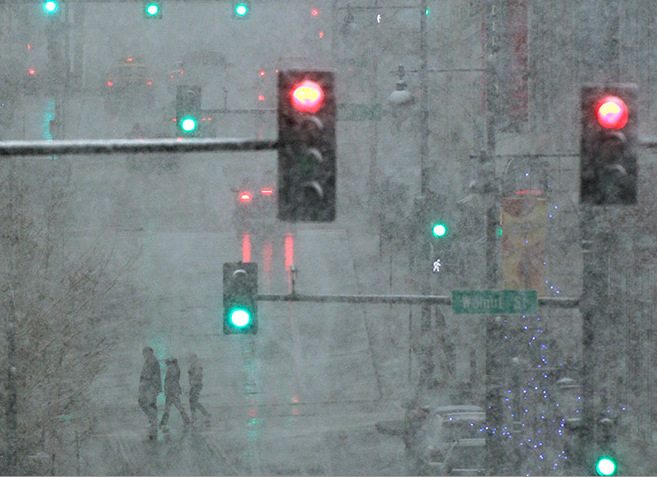I spent much way too much of the morning yesterday listening to the Sunday talk shoes where the primary topic of discussion concerned the role that government should play in regulating our lives. Gay marriage, sugared water, and guns were the focus, but at its heart the real concern was whether the state should guarantee liberty and freedom or public order. What all seemed to forget (or ignore) was that this is not a simple opposition that can or should be resolved easily or once and for all in one direction to the exclusion of the other. A world in which all are free to do whatever they want has a name (anarchy), as does a world in which there is total order and control (fascism) and neither is particularly salutary. Indeed, what makes liberal democracy such a difficult and precarious political institution is that it sits on a rather narrow precipice between the two, its success dependent on the necessity of maintaining equilibrium between liberty and order and predicated on some measure of public trust in the institutions that administer that balance. And therein lies the real problem, for at the current moment our political institutions suffer from a deficit of public trust.
The photograph above appeared randomly in one of the daily slideshows yesterday afternoon, and in its way it displays a simple model of how government regulations often work effectively in the background and how they rely upon public trust to manage the tension between liberty and order. Without stop lights our public thoroughfares would be both chaotic and a hazard to vehicles and pedestrians alike. The regulation of traffic through alternating signals to “stop” and “go” make it possible for all to use the roads equitably and in a manner that is both orderly and safe. Shut at dusk and in a snow storm tinged haze that otherwise makes visibility problematic, the alternating red and green lights mark the normal rhythm of the thoroughfare, designating zones of free movement and public safety. And as the image above indicates, the traffic seems to move pretty well.
What makes the system work, of course, is the trust that one has in the system itself: a trust that the regulations maximize both the flow of traffic and the safety of all; a trust that the regulations recognize and address the competing interests of all in more or less equitable terms—or when equity is sacrificed that it is done for reasons that serve a compelling public interest; and perhaps most importantly, a trust that pedestrians and vehicles will both honor the regulations, yielding to the other as the rule of law dictates. Without such trust the regulations themselves will fail and the legitimacy of the system itself will be at risk. The potential problem is gestured to in the above photograph as we see pedestrians who appear to be crossing against the light and thus challenging the rule of law. There is no traffic in the foreground and so it would seem like they are safe and that, at least in this instance, they do not impede the public order. Perhaps they have good reasons for their transgression and we should certainly be willing to take that into account. That, after all, is what we have the courts for. Still, the presumption is against them, and their refusal to follow the rules is both a clear threat to the prevailing institutions of law and a reminder that we need someone to be responsible for making sure that the regulations are upheld in order to secure the public trust. Without both our streets would be neither free nor orderly.
The point to be made is that the problem of government regulation writ large, rather like the problem of regulating traffic, is never as simple as the relationship between stop and go. It also requires a profound trust in the rule of law that animates such regulation as well as those who work to manage and maintain the complex tension between liberty and order without sacrificing one to the other—or imagining that such a sacrifice could ever be in the best interests of the larger society.
Photo Credit: Charlie Riedel/AP

Discussion